10 Apellations. 10 Interpretations of Sweetness.
The wines of “Sweet Bordeaux” go so far beyond what the mainstream consumer knows as “Sauternes.”
There’s a “new” style of wine coming out of Bordeaux France, yet ironically enough its origins come from one of the oldest and most famous First Classified Growths in the region. Today, we’re diving deep into a wine that emanates from South Western Bordeaux’s AOCs (Appellation d’origine contrôlée or “protected designations of origin”).
The entire area encompasses over 3,000 hectares of vines and 500 producers. Yes. These wines are sweet. And because of this “sweet” connotation it hasn’t really caught on in popularity with the mainstream wine consumer. However globally, that trend is beginning to change.
Consumers in China are quickly developing a thirst for Bordeaux’s sweet white wines as the food pairing potential continues to become more apparent. Smaller pockets of consumers in the United States who have an affinity for fine wine production are also jumping on board.
When we think about Bordeaux France, our minds immediately gravitate towards the legendary dry red wines of Bordeaux… Margaux, Graves, St. Emillion, Paulliac, Pomerol and others. Winetraveler is here to change that mentality.
We were recently invited to France by the Sweet Bordeaux Wine Board to showcase the region’s sweet wine styles and production practices, in addition to the incredible food pairing potential that is putting many classic pairings to shame.
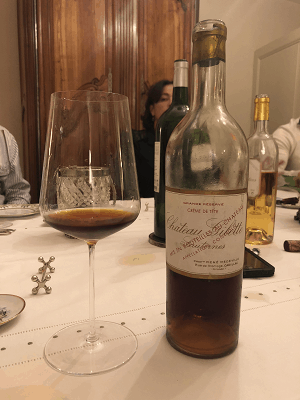
Fun Facts About Sweet Bordeaux
These wines are unique. They’re unfortified (meaning additional spirit is not added to the wine post production), and the effort to achieve the desired flavor during the winemaking process goes beyond any other method in the world.
Sweet Bordeaux wines are typically made with at least 2 of 3 grape varieties. The most critical is Semillion, which accounts for about 80% of vineyard plantings and favors the development of the Botrytis fungus.
Sauvignon Blanc & Gris accounts for 15% of plantings, bringing vibrancy, freshness and vigor to the wines. Muscadelle is also occasionally employed in these blends, though these days at a lesser concentration. Muscadelle accounts for 5% of vineyard plantings and brings voluptuousness to the wines.
To give you a comparitive sense of how special production is in this region, one hectare of dry white wine costs approximately 600 euro to produce. Vinifying one hectare of sweet grapes costs approximately 2000 euro. Further still, one grape vine will yield just one glass of wine.
What most wine enthusiasts don’t realize about Bordeaux is that the sweet wines were the first to be made in the region centuries ago, not the dry red wines that we know and love. Back then, local producers were not so familiar with how to make quality dry reds, but they were relatively well versed with sweet wine production. Ironically enough, the peasants and lower-class were served the dry reds, while the wealthy landowners enjoyed the sweet style.
Locally, the new trend is to drink Sweet Bordeaux while young. These youthful variations are a bit sweeter than their older vintage counterparts, while still retaining fresh fruit tones, vibrant acidity and a lighter body. Classic tasting notes for these wines suggest hints of apricot, honey, candied orange, floral tones, custard and a variation of subtle spice. However, more specific flavors can vary by appellation. Oak aging is often employed, but scientifically producers have not come to a conclusion on what the optimal aging period should be. That being said, during our visit some of the best sweet wines we tried were unoaked.
Botrytis Cinerea
It all starts in the vineyard, and the winemakers here are world-renown for the preciseness of their craft. While wine production here is some of the most special in the world, there’s a naturally occuring element in the vineyard that is neccesary to produce Bordeaux’s sweet white wines.
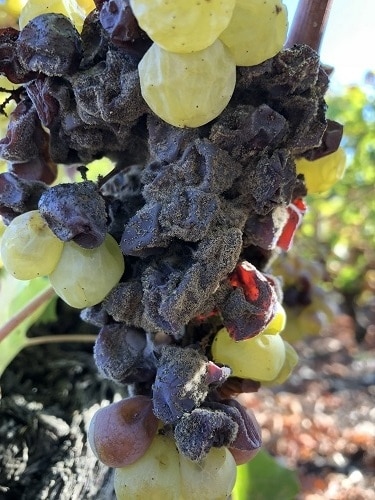
Also known as Noble Rot, Botrytis is a unique kind of fungus that affects the Semillon grape varietal during the fall season just before harvest. The affected grapes are sticky and full of aromatics, maintaining a shriveled appearance that evolves over time. Botrytis is extremely important for developing candied orange notes and spicy nuances.
How this fungus attacks the grape clusters and the length of time it takes to infiltrate the cell structure itself has a dramatic effect on the resulting aromas and flavors. As the Botrytis spores expand, it depletes the water-based juice from the Semillon by as much as 50%. This improves the sugar concetration of the grape dramatically. It also results in very specific aromas coming from this newly crystalized fruit.
As this is a natural process, it’s rare that Botrytis will affect an entire grape cluster uniformally. Because of this, harvests in Southern Bordeaux’s AOCs are all done by hand, over several passes over days or weeks. This is called successive selection or sorting. This unique (and neccesary) harvest process results in extremely low grape yields. Producers here undertake a large risk each year while making this style of wine, as outside weather-related elements such as hail, excessive rain or drought can make or break an entire vintage.
The quality of work employed during harvest is critical. The grape pickers hired by each Chateau must have significant experience under their belt to recognize a botrytis-affected grape that is ready for picking. It’s a meticulus process that has been refined for over 400 years.
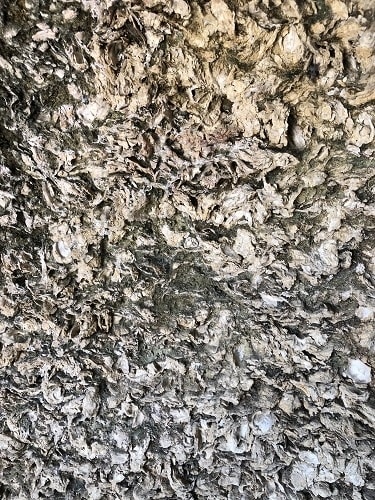
The Terroir
For Botrytis to affect the grapes, the soil composition and weather is the most important aspect. Soil in the vineyards is typically nutrient poor, and also well drained, allowing for more concentrated grapes. In addition, there are numerous microclimates, facilitated by the location of the Garonne and Ciron rivers.
An essential element to the onset of Botrytis is the early morning mist that appears exclusively in the fall season, preceding harvest. By noon, the majority of the mist is burned off by the afternoon sun. This cohesive relationship between fog, sunshine and the grape vines is an iconic quality of the area.
Visit Bordeaux.
If you’re considering visiting France, Bordeaux is one of the most trending cities to visit in Europe currently, and it serves as the perfect first stop outside of Paris before embarking further into wine country. There’s a new high-speed train that leaves from Paris which can have you in Bordeaux in just a couple of hours. More airlines are now offering direct flights to BOD (Bordeaux airport code) as well.
While Bordeaux’s famous First and Second Growth Chateau provide the region with substantial brand awareness globally, it’s the French Lifestyle and how it ties into the production of wines here that often goes overlooked by the wine consumer. The mantra in this portion of France is to slow down, live in the moment and develop an appreciation for the simple pleasures in life.
The city of Bordeaux itself is now a bustling, eclectic, musical, cultural and architectural gem, complete with a gastronmic scene that extends far beyond normal conventions. It’s the epitomy of “European Charm,” with historic alleyways, charming squares, inviting cafes, designer shops and bars. Navigating the city on foot, by car and now by bicycle has been optimized for the modern Winetraveler, making it a flexible city for each individual to digest at their own pace.
The University of Bordeaux is churning out forward-thinking intellectual talent on a daily basis, yielding a younger population bringing a fresh vibrancy to the city. In fact, in many ways what’s happening in Bordeaux is comprable to the growing gastronomic and tech cities in the United States, such as Austin, San Diego and Denver. The main difference is the historical foundation dating back centuries and how it’s being tied into modernity.
RELATED: Learn About the Sauternes Region and Wines of Bordeaux
Stay with us over the next few months as we continue to discuss the ground breaking wines, experiences, technology and winemaking practices coming out of Sweet Bordeaux. We’ll be breaking down each of the individual AOCs, and how you can visit and taste these special wines. It’s only the beginning!
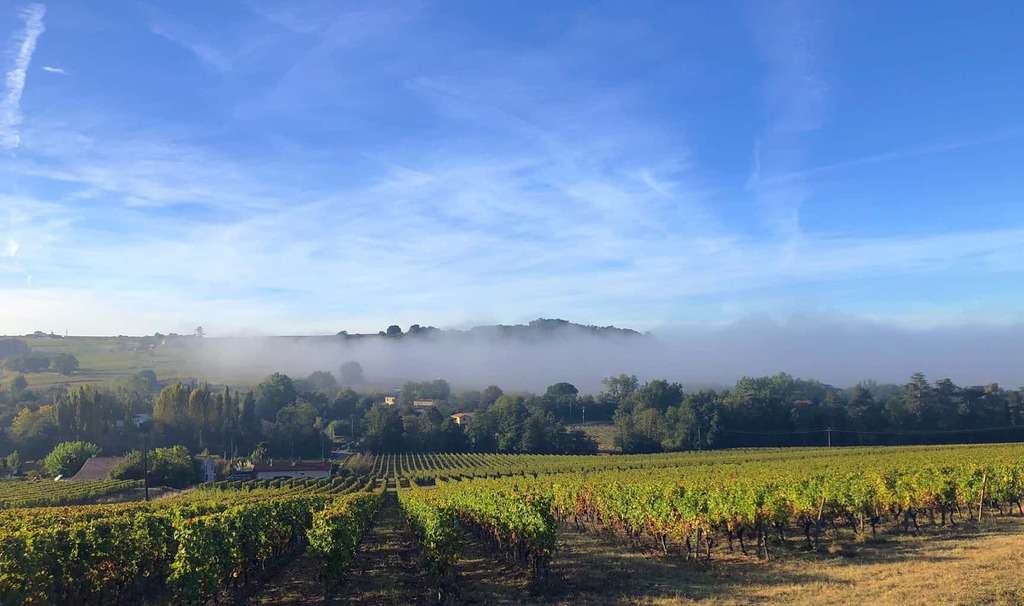
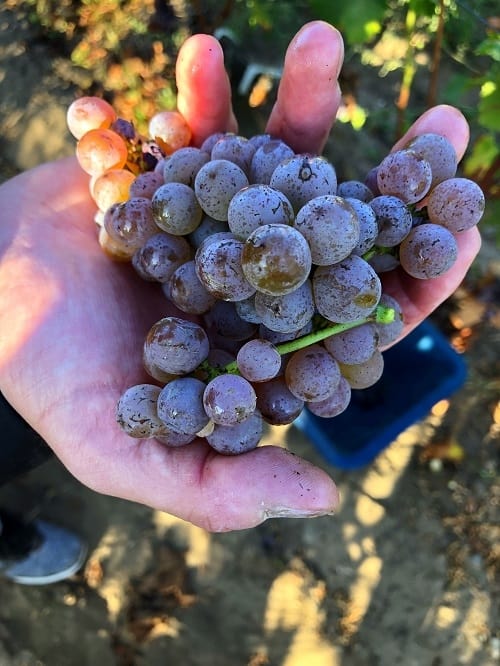
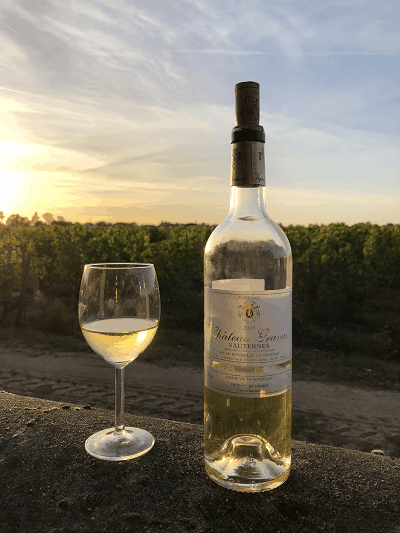
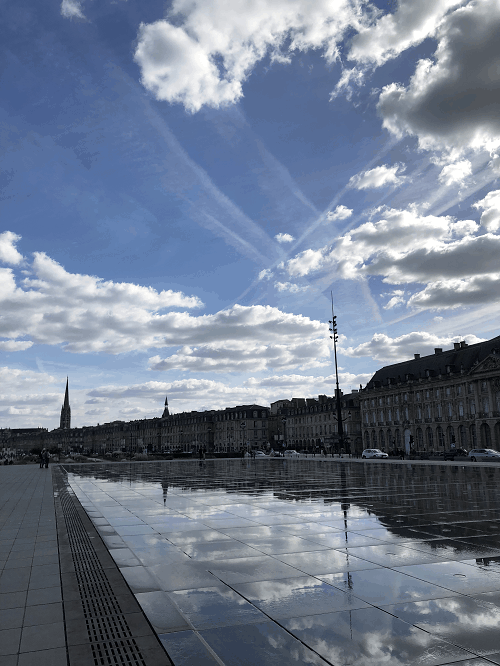
The photo of the soil is amazing! Thank you for giving an in depth look at these wines and this region and an idea of it’s expansion into new markets! Fascinating!
Very interesting read Greig! I didn’t know much about sweet Bordeaux wines but now I definitely know more! Cheers 🙂
Very interesting to learn more about Bordeaux sweet wines! Sauternes is definitely a favorite after dinner wine for me.
We recently made our first trip to the area and loved it. We don’t drink a lot of sweet wines but when done well, they are hard to beat. A great overview and looking forward to future articles!
Really enjoyable start to your sweet Bordeaux series, and great Botrytis overview. I hope more people will realize this wine works with savory dishes and as you say, is great to enjoy young. I’ll be back for more sweet Bordeaux!
Thanks for your kind words Lynn! This region completely opened my mind to a new take on yet a very old world style of wine culture.